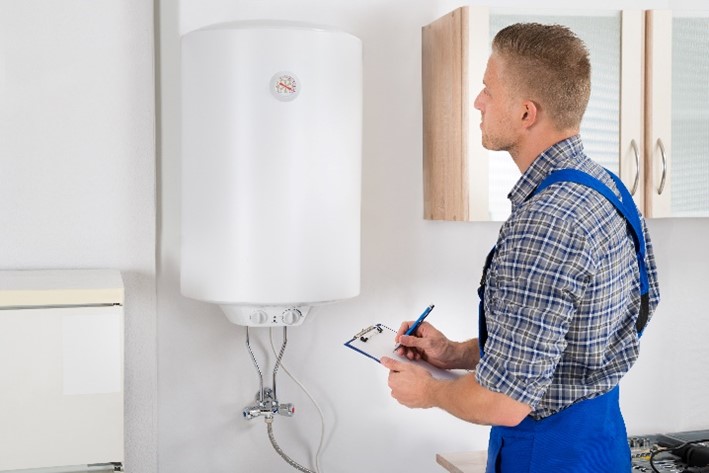On this page underneath you can locate more professional help and advice in relation to Tips on Maintaining a Water Heater.

Warm water is crucial for day-to-day convenience, whether it's for a revitalizing shower or cleaning meals. To ensure your hot water system runs successfully and lasts longer, normal upkeep is crucial. This short article supplies sensible ideas and understandings on just how to preserve your home's hot water system to avoid interruptions and expensive repairs.
Intro
Preserving your home's warm water system may appear difficult, but with a couple of simple steps, you can guarantee it runs smoothly for several years to find. This guide covers whatever from comprehending your hot water system to DIY upkeep suggestions and understanding when to employ specialist assistance.
Importance of Maintaining Your Warm Water System
Routine maintenance not only extends the life-span of your warm water system yet likewise guarantees it operates successfully. Overlooking maintenance can bring about decreased efficiency, greater power expenses, and even early failing of the system.
Indications Your Hot Water System Demands Maintenance
Understanding when your warm water system needs attention can stop major problems. Look out for signs such as irregular water temperature level, odd noises from the heater, or rusty water.
Recognizing Your Hot Water System
Prior to diving right into maintenance tasks, it's practical to understand the fundamental parts of your hot water system. Commonly, this includes the water heater itself, pipelines, anode poles, and temperature level controls.
Regular Monthly Upkeep Tasks
Routine monthly checks can aid catch minor problems prior to they escalate.
Purging the Hot Water Heater
Flushing your hot water heater gets rid of debris buildup, enhancing performance and prolonging its life.
Checking and Changing Anode Rods
Anode poles prevent deterioration inside the tank. Examining and changing them when broken is important.
Evaluating and Adjusting Temperature Level Setups
Readjusting the temperature level settings guarantees ideal efficiency and safety and security.
Do It Yourself Tips for Maintenance
You can carry out a number of upkeep jobs yourself to keep your hot water system in leading condition.
Checking for Leaks
On a regular basis evaluate pipelines and connections for leaks, as these can result in water damages and greater costs.
Testing Stress Relief Valves
Evaluating the stress safety valve ensures it operates appropriately and protects against too much stress accumulation.
Shielding Pipes
Shielding hot water pipelines reduces heat loss and can save power.
When to Call an Expert
While do it yourself upkeep is valuable, some issues need professional experience.
Facility Concerns Requiring Professional Aid
Instances consist of significant leaks, electric problems, or if your water heater is constantly underperforming.
Routine Specialist Upkeep Benefits
Specialist upkeep can consist of extensive evaluations, tune-ups, and making certain compliance with safety and security criteria.
Final thought
Normal maintenance of your home's hot water system is essential for efficiency, durability, and price financial savings. By complying with these pointers and knowing when to seek specialist help, you can make sure a dependable supply of hot water without unexpected interruptions.
Water Heater Maintenance Tips
Test the TPR Valve
Shut off the power and the cold-water supply valve. Place a bucket under the pipe connected to the temperature-pressure-release (TPR) valve on the top or side of the tank. (This valve opens if the tank pressure gets too high.) Lift the valve’s tab to let some water out, then let go. If water keeps flowing, drain the tank partway, unscrew the old valve with a pipe wrench, and install a new one. Check the Anode Rod
Put a hose to the tank’s drain cock and let out a few gallons of water. Now fit a 1 1/16-inch socket onto the rod’s hex head on top of the heater (or under its top plate) and unscrew the rod. If it’s less than ½ inch thick or coated with calcium, buy a new one, wrap its threads with Teflon tape, put it back in the tank, and tighten securely. Use this segmented rod if headroom above the tank is limited. Drain the Tank and Wash Out Sediment
Drain the remaining water in the tank into the bucket, then stir up the sediment on the tank’s bottom by briefly opening the cold-water supply valve. Drain and repeat until clean water comes out of the hose. Close the drain cock, refill the tank, and turn its power back on. Adjust the Temperature
Find the temperature dial on the side of the tank and unscrew its cover. Adjust the dial to 120 degrees using a flathead screwdriver. For every 10 degrees the temperature is lowered, you can expect to save up to 5 percent in energy costs. Turn the water heater off or the thermostat down to its lowest setting if you plan to be away from home for more than three days. Insulate the Pipes
Buy some self-sticking 3/8-inch-thick foam pipe insulation that matches the pipes’ diameter. Slide the foam over the hot-and cold-water pipes as far as you can reach. Insulating the cold-water pipe prevents condensation in summer. Peel the tape and squeeze the insulation closed. If the pipe is 6 inches or less from the flue, cover it with 1-inch-thick unfaced fiberglass pipe wrap. https://www.thisoldhouse.com/plumbing/21016402/how-to-maintain-a-water-heater

I came across that piece on Water Heater Maintenance Tips You Can't Afford to Forget when surfing around the search engines. Sharing is good. You just don't know, you will be helping someone out. I enjoy your readership.
Schedule Your Job Now